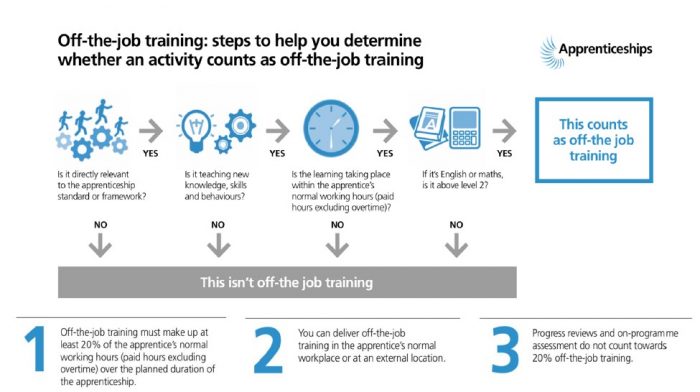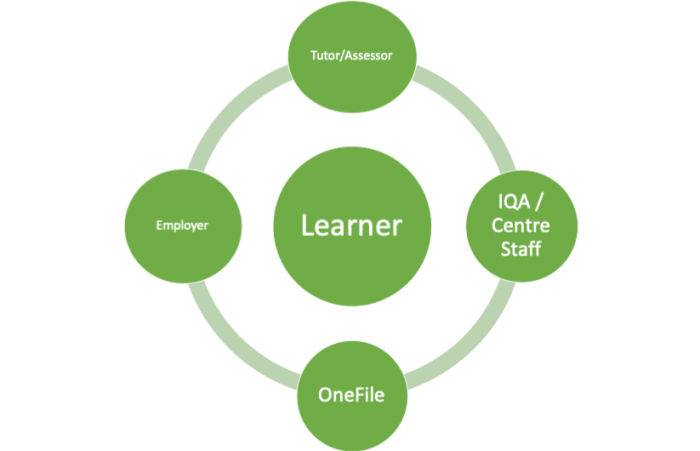In this post our Director of Quality and Education, Andy Heald, takes us through developments in learning and how employers of apprentices must continue to engage with those on furlough or on a break in learning.
Throughout the COVID-19 crisis there has been a great push by TVS to utilise technology for the benefit of all.
On a recent online webinar session I attended with Brad Sugars from Action Coach, he talked about Re-Think, Re-Invent, Re-Open – check this out here. He mentions how it has been discussed and highlighted throughout the crisis that virtual is the new norm. He goes on to say that this crisis has propelled technological advances in business and education forward by 5 years.
It has been suggested that training providers must be open to radical reinvention to find new ways of working and generating revenue. As an example, digital learning (Virtual Learning Experiences aka VLE’s) have been around for decades, but for some it’s new! Those new to VLE’s will be going through a digital transformation at present that links to the point made by Brad Sugars – “people have had to re-invent and move to technical advances or run the risk of closure.#
However, post COVID-19, it’s not going to be as easy to maintain on-line learning. Many people will revert back to ‘type’ when we return to work. Further digital transformation or reinvention will be needed to incorporate the best of both worlds.
The way we, as an apprenticeship and training provider, have ensured that learning can continue through the use of various platforms must be celebrated and championed! I am extremely proud of my team with regards to how agile we have been and the impact we have had on all our learners and customers. ‘Great work TEAM’.
However, amongst the very best of blended learning, there are providers promoting 100% online delivered Apprenticeships. The funding rules state that apprenticeship training is not to be delivered entirely by self-directed online/distance learning (see page 22 paragraph 105.6 of the current apprenticeship funding rules).
And this leads onto my point – Employers need to be, and stay, above the line.
‘Above the line’ in simple terms is:
Ownership
Acceptability
Responsibility
‘Below the line’ is:
Blame
Excuses
Denial
The best way I remember this is OAR – a boat rowing in a forward direction, and BED – lazy in your bed not being responsible. (This is something I constantly use with my own professional and sometimes personal decisions, which I don’t always get right, as it enables me to check and challenge myself before answering/replying.)
Going back to the point…
Employers of SME’s need to ensure they take direct OAR for all apprentices.
Here’s a check list that you may find useful, in particular for the 20% off the job learning – OTJL
Apprentices throughout this period have been furloughed or are working from home, accessing online training. The only face-to-face interaction in regards to the apprenticeship has been via remote terms, such as video calls.
Far to many employers throughout this period have been reliant on the providers to deliver the apprenticeships without proper understanding of the KSB’s and what the apprentice is studying, focusing on and most importantly needs support on. I also fear that when some businesses start to return to common business practice, employers will be rushing people, especially apprentices, back into work to make a quick buck! Apprenticeships can’t be delivered fully online, and certainly not in volume where the key to delivering personalised IAG and support is lost. It is vital to create a rich tapestry where high quality learning and assessment can take place. This only comes from full employer OAR of the apprentice, their needs, progress, personalities, and emotional wellbeing, enabling you to get the best out of your apprentices!
Some employers have also assigned mentors to look after the apprentice within businesses albeit it is still the employers OAR to ensure the mentor has the desired skills and is reporting back accordingly. The employers are still directly responsible for each apprentice meeting the rules set out by the government and that as a employer you have 100% committed to everything outlined in the commitment statement and by the ESFA.
Apprenticeship cannot run 100% online. I would suggest developing your support models in collaboration with the training provider to embrace a ‘blended learning’ approach that encompasses all the positivity of online delivery, face-face and group interaction.
As Employers, your OAR along with understanding the pedagogy of blended learning and support for your apprentices will be the key to unlocking a true augmented delivery package ensuring a rich learning environment. A blended approach will utilise various methods to deliver learning combining face-to-face interactions with online activities. The balance between the face-to-face interactions and digitally enabled activity varying depending on the design and implementation of the learning. Flexibility will develop self-directed learning skills and digital knowledge. A blended learning approach is a great way to augment the learner’s experience, but its advantages go beyond that.
Blended learning can help to bring together the main advantages of the tutor presence, immediate feedback, and peer interaction (including peer-peer learning) and also removes learner isolation and the possible difficulties with motivation.
It’s important we embrace the positivity around technology but at the same time ensure we use the face-to-face and workshop interactions to enable us to triangulate the support from employers, tutors/trainers, training providers. This leads not just to outstanding teaching, learning and assessment to drive achievement and progression, but also to ensures you maximise the productivity and impact the apprentice has on your business.
The triangulation starts with the initial assessment of the learner/apprentice. Matching the individual learning needs to that of the teaching and learning experience the tutor and provider will offer and deliver will ensure outstanding learning and impact. It is also essential that all employers take OAR to understanding the initial assessment information of the apprentice and ensure the support measures are in line with the centre and tutor. Together, you need to have a clear journey established, ensuring you as the employer meet all the commitment expectations and apprenticeships rules.
Closing the triangle by having assessment (both formative and summative) that systematically and continually supports each individual learner in their progress and informs of the impact to the learner and to the employer. Employers again can take OAR of this by having regular reviews with both tutor and learner, planning and supporting the 20% off the job learning tasks and regularly reviewing and informing the work they complete. Engagement with OneFile is a key way to do this.
It is also important as an employer that you encourage and develop a strong and rich collaborative learning environment, where learners will have a voice in their learning and their views, knowledge, understanding and opinion will be shared and valued in learning contexts. This can be done through:
- Collaboration through the use of learning technologies
- Collaboration by seeing teaching, learning and assessment as a team process
- Collaboration to engage, to stretch, to challenge and to encourage
- Collaboration through peer-peer engagement, participation and learning
To conclude, it’s important to remember that apprentices are with you to learn as much as they are to learn. Learning is a social interaction! It works best and is at its most powerful when everyone feels able to contribute, question, challenge, explore and experiment and it’s your responsibility as an employer to take OAR for exactly that.
TVS will be running a number of free webinars compulsory for all apprentice employers on the utilisation of a blended learning approach, including how a you can take further OAR and support and the psychology behind engaging your apprentices and learners to ensure an outstanding strategy can be developed with a key focus to get the best out of your learners and aid long term retention.

